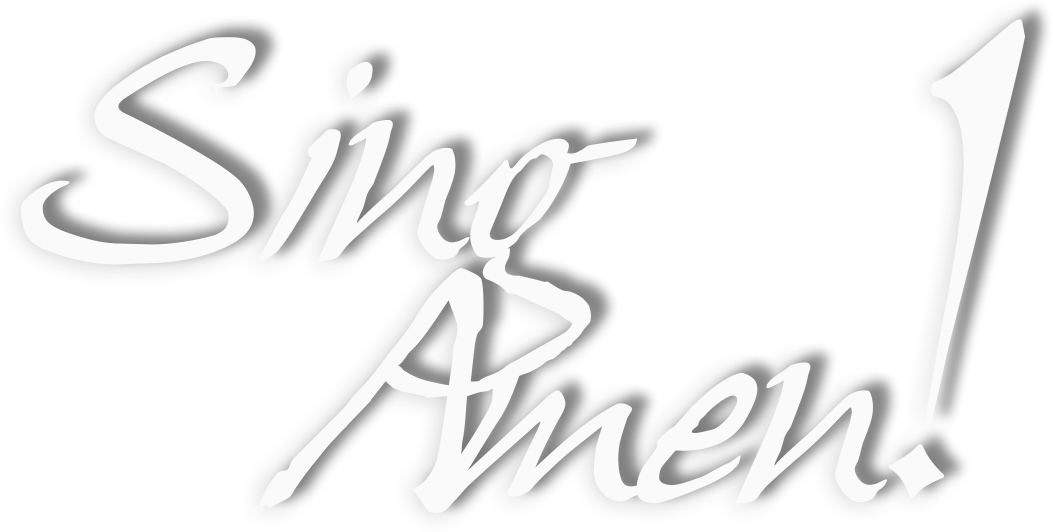Ministering through Music
Keyboard to Keyboard
¡Cantemos Amén!
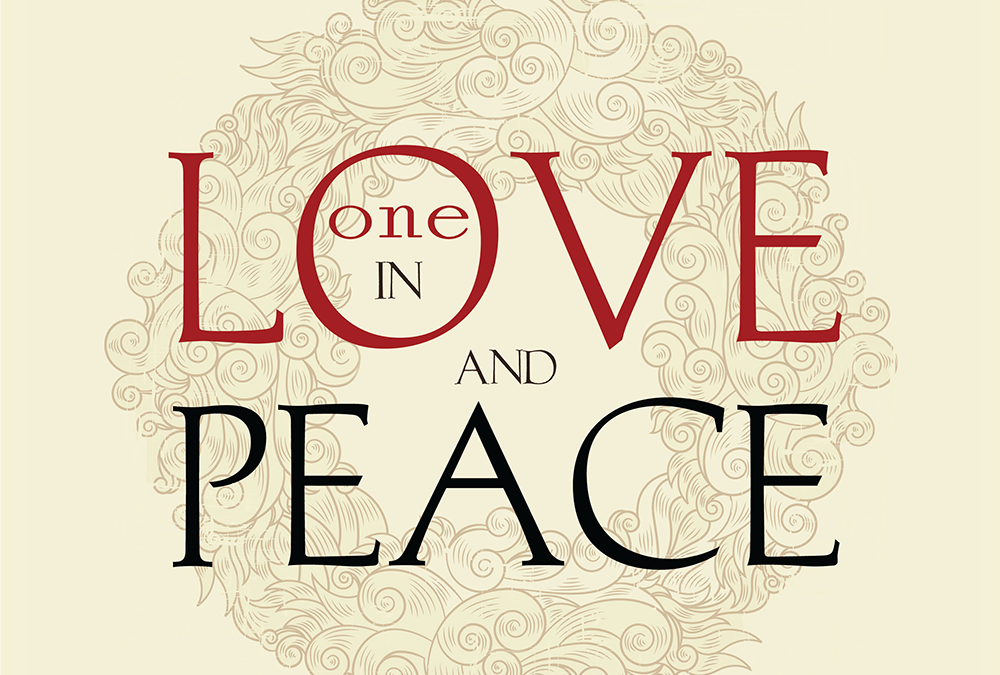
Don’t push the panic button!
Anyone who knows me has probably heard me say “If you need someone to panic with you, give me a call.” I can usually be trusted to panic just about any time of the day, for good reason or no good reason, and sometimes just for fun (as well as to keep in practice because you never know when you might be called upon to panic for real).
Church musicians have lots of reasons to panic. We’ve all had liturgies planned full of celebratory and intricate music only to wake up to an ice storm or blizzard. Something innocently consumed the night before can become an issue at 5 am for you OR for your soloist/cantor/guest instrumentalist. Whether it’s a special celebration or just about any liturgy you are coordinating, there are lots of pieces of the puzzle to put together on any given day.
For those of us who play the organ regularly, there are even more reasons to panic! Organs can be sensitive to heat, cold, leaking roofs, excess humidity, not enough humidity, aging leather, power failures, mouse droppings—the list is pretty long. (The list isn’t much shorter for other keyboard players, either.)
So, anything we can do to reduce occasions for panic makes our lives easier and more productive as church musicians, and especially as musicians gliding from Keyboard to Keyboard.
One collection published by GIA that is an invaluable resource for people who need as much flexibility as possible is One in Love and Peace arranged by Kelly Dobbs Mickus and Bob Moore. This collection of music for weddings includes preludes, processionals and recessionals, with arrangements of some of the most requested wedding selections in both organ and piano versions side by side. An ancillary edition includes parts for other instruments (B-flat trumpet, solo C instrument, and string quartet). A demonstration CD is available for as well and is useful in the wedding planning process.
Kelly did the organ arrangements, and Bob the piano (which can be adapted for keyboard-only use on the organ) and for a list of the contents, click here.
I would have benefited greatly from having this volume at a wedding I played a few winters ago in Detroit. The historic church where the wedding was held housed an organ that disliked the frigid cold weather so much, it sang lots of notes on its own without any help from me. Most of the time they stopped singing after a few minutes, but one February Saturday after a night of below-zero temperatures I arrived for the wedding only to discover that the façade pipes of the organ had developed several very loud ciphers in the lower octaves of the Great manual, and while they made an interesting cluster, I didn’t think the wedding party would be thrilled. I tried all the tricks I knew, and after about an hour all but one pipe had been coerced into silence. The wonderful building engineer (quite a bit taller than I) graciously volunteered to climb up onto a ladder with me guiding him and stuffed a plain white towel into the misbehaving pipe, where it had to remain for several weeks until the organ technicians could schedule a visit. I was able to use the organ for that wedding because of said kitchen towel, but had we not been able to access the pipe, I would have had to switch gears and play all the wedding music on the piano instead of portions of it. Simply having this volume brings a sense of peace that under similar circumstances, I now have everything I could need in one collection, whether there’s a cipher or any other reason why I might need to go back and forth from Keyboard to Keyboard.
So, while I do love to panic, there’s no need for me to press the panic button over wedding music anymore. As much as I do joke about panicking, I was amused and horrified this past month when I visited another church to rehearse with an instrumentalist for an upcoming concert. I had never played that organ and the organist was not around that day. My oboist friend and I looked all over for the on switch (that in itself might have to be the subject of another blog—how to find the on switches for organs…). The church was dark, and we looked up, down, on the side of the console, under the console, on the wall, (using our iPhone flashlights), and we just couldn’t find it. (Turns out the buttons were hidden in plain sight but they were small and in the dark I couldn’t see them under the music desk). Our panicked pushing of all things button-like led us to push an actual panic button which was located on the wall next to the console and had no identifying red-hot button. Well, the police called the church staff and they all rushed in, politely concerned but also slightly disturbed that we had set off the alarm. Did I panic then? Well, yes, but so did everyone else. As usual, there’s rarely any need to panic. So, order this volume and I will relax, knowing that you will benefit from this wonderful collection!
So, note to self…..don’t push the panic button!
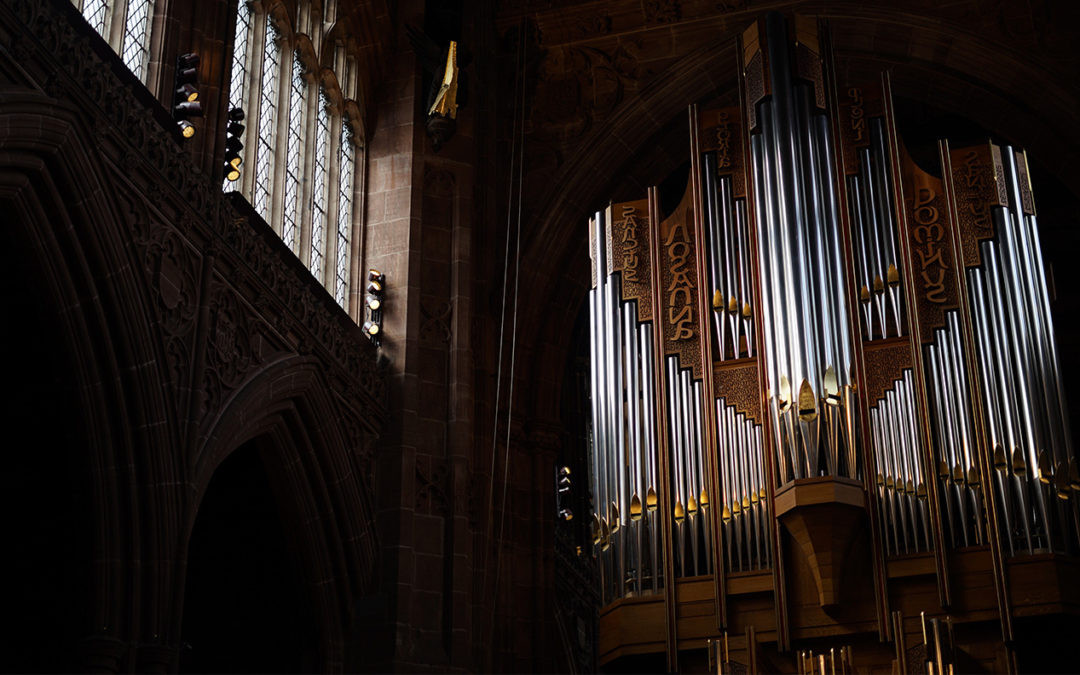
Look, Ma, No Feet!
Organists play with their feet! It’s one of the unique aspects of the instrument, fascinating yet intimidating. Most organists expend a lot of effort to ensure that everything is just so, from a favorite pair of organ shoes (mine are tap shoes without the taps—they last for decades if cared for properly and in my case they HAVE to last forever now that they don’t make them without the taps anymore and I’m down to my last pair), to being sure the laces are tied perfectly, and that you are wearing the right socks (not too thick, not so thin that your feet freeze in a cold church), to adjusting the bench to suit your body type, and being sure the pedals don’t have dirt or grit on them, which could ruin both the pedals AND your organ shoes.
Sometimes we don’t play with our feet at all, for various reasons. Pianists who only play the organ occasionally might not want to take the time to learn to use the pedals. You might find yourself asked to play a one-manual organ with no pedalboard. Physical issues can prevent you from playing the pedals at times. At my husband’s church there are two organs: the main Klais organ in the sanctuary and a (moveable) one-manual organ with 8’ 4’ 2’ and 1 1/3 stops, for continuo playing in a Baroque chamber orchestra and for which it gets regular use. When not being used thus it is housed in the church’s chapel and played for an occasional smaller funeral or wedding, and certain services during Christmas and Holy Week. It’s during those times that finding music that works well on either a manuals-only organ or a piano interchangeably (such as for an outdoor service using an electronic keyboard) is a real challenge.
There aren’t a lot of collections for manuals only, and often only one or two such pieces are tucked in a volume of organ music. Recently I played the above-mentioned organ for a funeral, and I had at least seven volumes open to the manual-only piece in it, and naturally, they all fell off the console during the funeral (not only making a delightful slushing sound, but losing my place in all the volumes).
Many composers are writing piano music for worship, but not all of it works on the organ. This article will focus on how to find music that is available for keyboard only, and can be played convincingly on either organ or piano.
Organ teachers introduce their students early-on to the music of J.S. Bach, whose organ works are definitive for any study of the instrument. There are lovely organ pieces by Bach for manualiter in the Clavier-Übung III and the Kirnberger’s Collection. The Bach-Gesellschaft Ausgabe (Bach Society Edition) is online at the International Music Score Library Project (IMSLP) and it’s easiest to search by BWV number. The manualiter pieces are usually two to three pages–my favorites are: Christ, unser Herr, zum Jordan kam, BWV 685; Vater unser im Himmelreich, BWV 683; Diess sind die heil’gen zehn Gebot’, BWV 679; and Allein Gott in der Höh’ sei Ehr’, BWV 717h. The four-movement Pastorale. BWV 590 has three manualiter movements—the opening movement has minimal pedal. There are YouTube recordings of all these pieces.
To search for public domain pieces, start by visiting IMSLP. Click on Scores, then choose either Work Types, Instrumentation, Featured Instruments, or Period/Style. It takes fifteen seconds to download each piece to examine it (unless you pay the yearly membership fee, which is well worth it). Nothing is labeled as to difficulty or whether or not they are for manuals only, but if you have time, searching through this repertoire can produce a fair number of gems. For example, go to Work Types, click on Recessionals, and you find 36 short pieces for organ or harmonium (a keyboard instrument of the reed organ family) titled L’instituteur organist by the prolific but little-known French organist Charles Renaud de Vilbac (1849-1884). Another search just for the harmonium yielded a Communion pour Orgue by Jacques-Nicolas Lemmens (1823-1881). There are a number of approachable and useful fugues on the Magnificat by Johann Pachelbel (1653-1706). All of these pieces will be listed and updated regularly at Sing Amen, at the Keyboard to Keyboard blog.
Manuals-only music available from GIA
Two Spirituals for Keyboard by Richard Proulx has charming settings of “In Christ There Is No East or West” and “Over My Head.” They work equally well on either piano or organ, and my organ registration suggestions are available on the Keyboard to Keyboard blog, found at Sing Amen! or in my GIA Quarterly article in Volume 30, No 4.
For the past three years I played at a church where the organ would cipher during the winter months when I turned the blower on. When the temperature was cold outside, a handful of pipes would continue singing on their own for a minute or two after I hit the power button. Most of the time they would stop on their own, but a bitter cold snap one February found me arriving for a wedding to discover that one very loud Principal pipe was refusing to stop. Luckily our building engineer climbed up on a ladder (with me pointing to the pipe), and shoved a towel inside it, so I was able to play for the wedding. For times like that or for any unpredictable situation I highly recommend One in Love and Peace, a volume of wedding music for piano, organ and optional instruments arranged by Kelly Dobbs Mickus and Bob Moore. Carroll Thomas Andrews has two collections: Processionals and Recessionals for Weddings and Other Occasions for organ without pedals and Processionals and Recessionals for Weddings and Other Occasions for organ manuals with optional pedal.
For a complete listing of music for manuals only which can be taken from keyboard to keyboard, visit singamen.giamusic.com and click on the Keyboard to Keyboard blog/GIA Organ Resources.
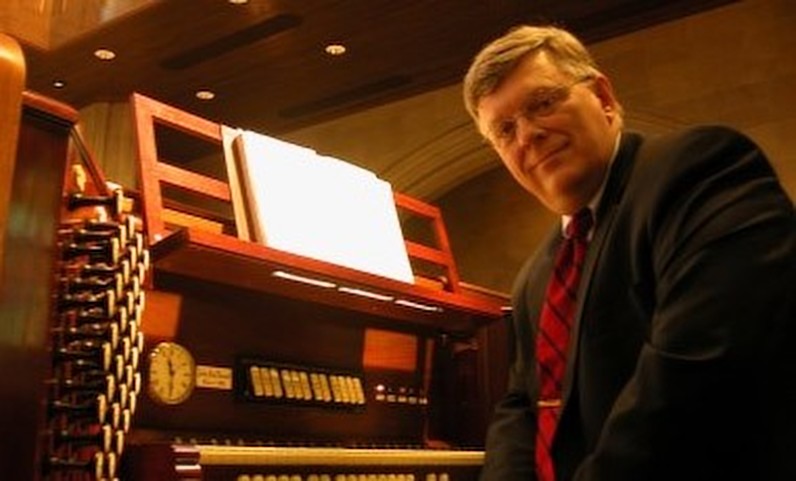
Organ Construction
The Organ’s Tonal Design and its Building Blocks
The following article was written by John-Paul Buzard, President of Buzard Pipe Organ Builders. John-Paul is a colleague I have known since our student days at Northwestern University, and he is always willing to jump in and be helpful to a friend. Here John-Paul explains the basic sound classes of the pipe organ:
The pipe organ is a unique musical instrument. It does not have a single tone color, but a wide variety of different tones which can be combined to produce the richest palate of sound known to humankind. Even though Full Organ is harmonically complicated and sophisticated, its fundamental building blocks are fairly simple.
There are two species of pipe construction: Flues and Reeds. Flues are like whistles; a vibrating column of air produces the sound and the geometry of the pipe colors it; Reeds produce their tone by a vibrating brass tongue which is amplified and colored by the resonating tube connected to it. Flue pipes make three groups or families of tone: Principals, Flutes and Strings. Reeds, being their own beast, produce a variety of imitative sounds.
Once you become familiar with the four families and their pitch levels, you can combine them to create new sounds. By using one’s ears and imagination the organ can be registered to text-paint hymns and anthem accompaniments. All it takes is spending some good play-time in the musical sand box minding the basic premise that there’s no right or wrong.
Principals
The Principals (or Diapasons) produce sounds specific to the organ; they do not imitate anything. These cylindrical pipes are made of metal. Stops in this family may be called Principals, Diapasons, Octaves, Super Octaves, Twelfths, Fifteenths, Seventeenths and Mixtures. Principals form the backbone of the organ’s tonal design, and they are found at a wide variety of pitches in both the manuals and pedal, to build up complete harmonic choruses.
Flutes
Flutes can be orchestral or organ-like with a wide range of tone colors. Flutes can be played together or with any other stop in the organ to fatten the tone, color an ensemble or a solo stop. The range of Flute Tones is limited only by the imagination of the organ builder. The geometry of the pipe body and the mouth treatment creates a flute’s tone color.
Flutes may be made of wood or metal, open or covered by a tuning stopper (or canister) inserted into or over their open ends. Stoppered pipes have prominent fifth-sounding harmonics, rather than the full range of an open pipe. These may be called Bourdons or Gedeckts. Open pipes may be called Melodias, Claribel Flutes, Open Flutes, Nachthorns. Some stoppered flutes have a “chimney” bored through their stoppers, or soldered onto their metal canisters. These are called Rohrflutes, Chimney Flutes, Flûtes á Bibèron, Flûtes d’Amour. Some flutes are tapered and are called Spire Flutes, Spitzflutes, Blockflutes, Recorders. These hybrid constructions replace a wee bit of the octave harmonics missing from a completely stoppered pipe.
Some open pipes are double their normal length, and have a hole drilled in the center of the pipe to stabilize the pitch. These are called harmonic pipes and their intense tone is imitative of a modern orchestral flute. Harmonic Flutes can be found at all pitches. These may be called Harmonic Flutes, Orchestral Flutes, Flûtes Octaviante, Octavins.
Strings
Organ strings are the warmest, keenest sounds in the organ, but sound least like their orchestral counterparts. They are called “strings” because they produce a harmonic series similar to a bowed string instrument. They may be soft or loud, and appear at many pitches. Typically a string-toned stop in the Swell division of an organ will have a partner rank, tuned slightly sharp, called a Celeste. The resulting undulation is warm and shimmering. Strings may be called Salicionals, Viola da Gambas, Gambes, Violes, Gemshorns, and Voix Celestes.
Reeds
Reeds produce the greatest variety of tones within a single family. They imitate medieval or modern orchestral instruments. Wind pressure, geometry of the resonating tube and the treatment of the reed itself determines the tone color and volume which the pipe will produce. Conical resonators produce a blaze of the entire harmonic series. These are called Trompettes, Trumpets, Cornopeans, Clarions, Trombones, Tubas. Cylindrical resonators produce a fifth-sounding harmonic series and may be called Krummhorns, Cromornes, Clarinets, Basset Horns. Hybrid-shaped resonators produce orchestral tone colors as English Horns, French Horns, Oboes and Bassoons in addition to the antique sounds of Bombardes and Zinks. Short-length resonators, often with creative resonator shapes, produce unusual tone colors like the Vox Humana, Rankett, Regal, Baarpfeife.
Mixtures
Mixtures are stops in which multiple ranks of pipes sound on a single note. These are nearly always made of Principal pipes. Mixtures are typically composed of unison and fifth-sounding ranks, repeating themselves at points in the musical scale which the tonal designer determines, given the desired result. If appropriately composed, scaled and voiced, a low-pitched mixture can be used to create a complicated full sound, but without adding brilliance to the ensemble; a medium-pitched mixture can add brightness to a chorus in the bass and reinforce the unison in the treble; a high-pitched mixture can add brilliance to a chorus or an individual unison stop for special effects. Mixtures are easy to spot as their stop controls indicate how many ranks each note plays by a Roman numeral. Common names you might see on your console might be: Mixture, Fourniture, Plein Jeu, Full Mixture. Scharf, Sharp Mixture and Cymbale are high pitched mixtures.
By artfully combining stops one can create a sound for any situation. By varying registrations for each verse of a hymn, the organ can add interest and, if the right stops are combined at the right time, highlight the texts being sung.
If one were to analyze the harmonic structure of Full Organ, the resulting graph would be almost impossible to read. With a majestic, full sound the organ can support hundreds of people in their singing. It can create a “Festal Shout” in one breath, and weep for the passing of a child in another. It significantly energizes the acoustics of the building, and routinely elicits emotional responses.
Have fun and take the time to listen to every stop in your organ, and combinations of others. You’ll find hundreds of possible combinations which you might use for just the right moment in an upcoming service. Enjoy your time in the musical sand box!
John-Paul Buzard is president and artistic director of Buzard Pipe Organ Builders, based in Champaign, Illinois and founded in 1985. He was appointed Curator of Organs for the University of Illinois at Urbana-Champaign following graduate school, and began to lay the groundwork for his company through organ-building and restoration projects in the Champaign area. Mr. Buzard continues as Curator of Organs for the University of Illinois, and also serves as Curator of Organs for MacMurray College, Illinois College, Indiana University, and DePauw University. He earned a Master’s degree in organ and church music from Northwestern University, studying organ with Richard Enright and Wolfgang Rübsam, and also spent two years in the organ performance program at the University of Illinois at Urbana-Champaign, studying organ with Jerald Hamilton. Mr. Buzard is a certified Master Organbuilder with the American Institute of Organbuilders (AIO), a member of the Associated Pipe Organ Builders of America (APOBA), and a member of the Worshipful Company of Musicians of the City of London.
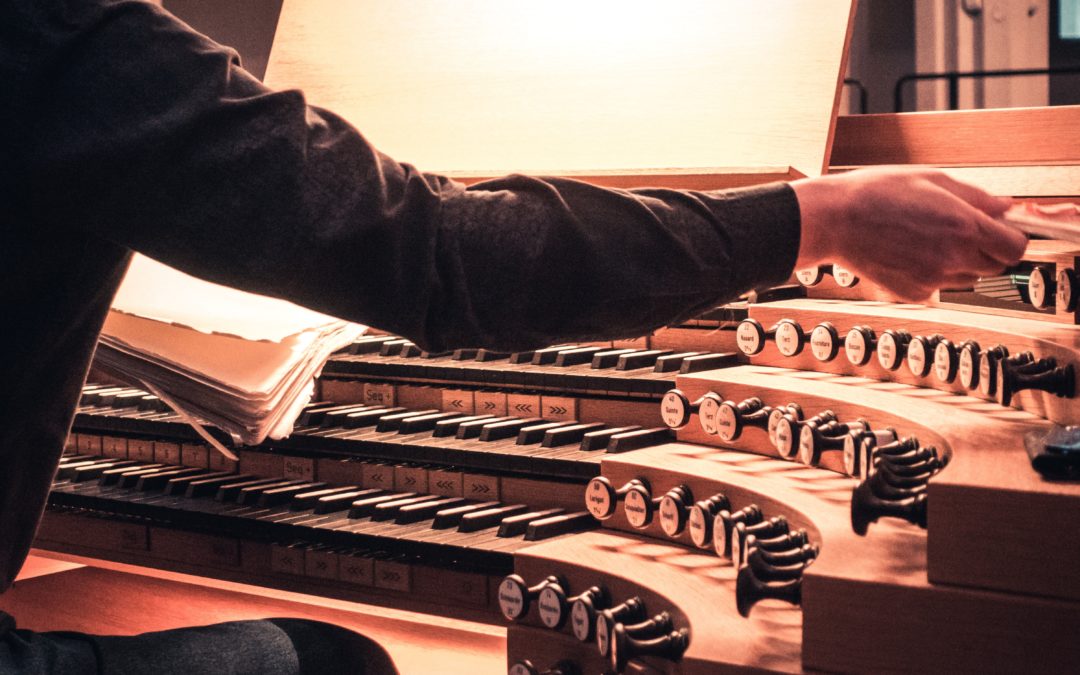
Keyboard to Keyboard
Welcome to my first edition of Keyboard to Keyboard! This article appeared in the GIA Quarterly, Volume 30, No 4. The beauty of a blog is that I can add links to the information included in that print article, and give you a bit more information. I am very excited and honored to be sharing my love of the organ with you, and I hope that you are inspired to jump in with both feet (or, if you don’t want to use your feet, just jump in anyway).
As a child I wanted to fly airplanes. (I also thought I wanted to jump out of them.) Then I discovered the organ and transferred my fascination with gadgets, knobs, buttons, lights, power, out-of-body excitement and massive sounds to a safer yet just as demanding career. As the daughter of a Presbyterian minister and as an organist, I’ve spent most of my life in churches. When I was ten years old the organist at my father’s church asked me to turn pages for her, knowing that I was taking piano lessons. Seeing my rapt attention, she offered to teach me for free (she was finishing an undergraduate degree in organ at Northern Illinois University and wanted a student…here’s a shout-out to Norma Washburn Kentner). Since then my love for the instrument and its repertoire has grown and deepened, and it is my hope to encourage others to discover for themselves what fun, satisfaction and downright excitement can be had by playing the organ. My focus is to help pianists who play in any church or synagogue where they are occasionally expected to play the organ and have not had any formal training on the instrument, pianists who have already taken some organ lessons and would like to find more resources, or anyone who has keyboard proficiency and would like to work on their service-playing and church-repertoire skills at the organ.
What’s stopping you?
Thinking back to my first organ lessons, I am remembering what was fascinating and what was intimidating. The array of pipes in varying shapes and materials in the chancel of my dad’s church was the first draw, even before I had seen a historic, large organ…also those wooden shades that opened and closed. Why did they do that? I wasn’t very attentive to my dad’s sermons (he knew that!) but instead was paying attention to the organ, the graded choirs, the choir directors and the organist.
What was intimidating to me was learning what the stop tabs were and how to use them, as well as what to do with my feet. I do remember that the first question I asked my teacher was how the pedals were arranged. It didn’t occur to me that they would be in the same order as the black and white keys of the piano—they were so big (to my ten-year-old eyes). I was afraid it was a completely different order of pitches. Believe me, I was very relieved.
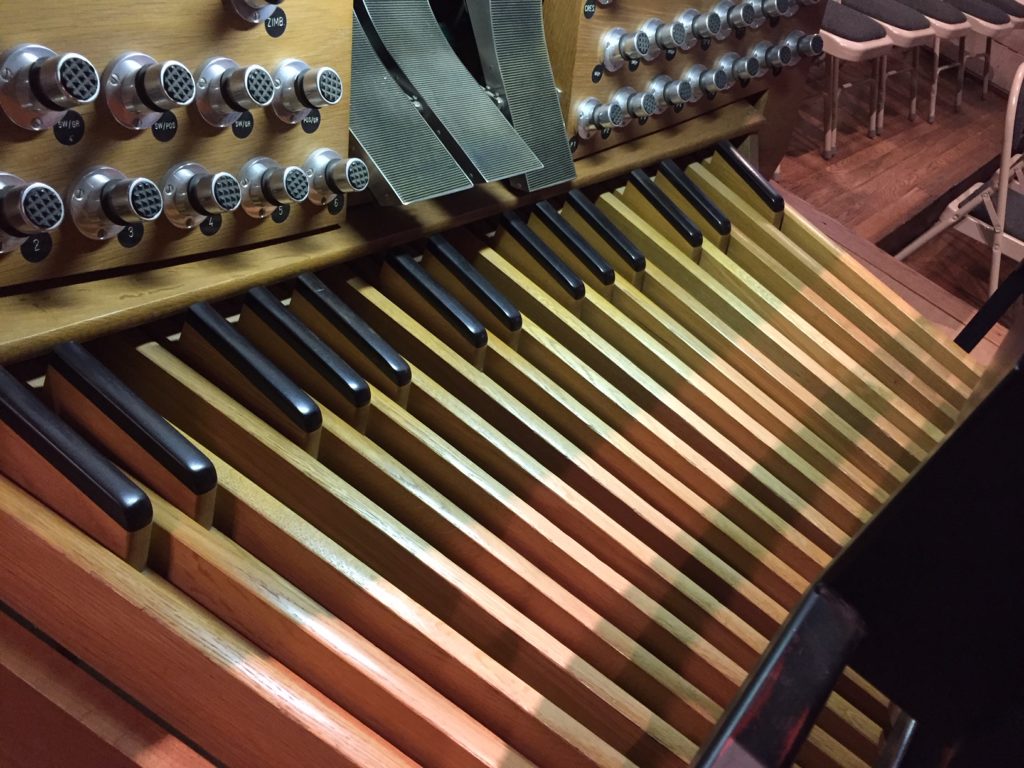
Having a teacher meant that learning the stops and how to use them wasn’t an issue, because she drew them for me. Such help is not available to the pianist without a teacher who wants to experiment and play occasionally, and it’s the question most people ask me first. What do I do with the stops? So, is that what’s stopping you? If so, there’s a lot of help out there.
Thankfully, much newly-published organ music has registration suggestions for each piece, which is helpful. The names and spelling of the stops may vary from organ to organ, but one can google the stop name to look for alternatives, explanations and even sound examples. For example, flutes on the organ can be called Rohrflote, Harmonic Flute, Bourdon, Gedeckt, etc.
Where to look for help, both in print and online
GIA is publishing a book on the organ from past Quarterly issues, edited by Jennifer Kerr Budziak, available in the summer of 2019. The Organist’s Craft contains articles on organ-playing and registration from a variety of authors. There are also books and online articles on organ construction and registration available from a variety of sources.
Easily-accessed videos make such learning and knowledge accessible to those who have internet access. These two resources combined can empower a curious and dedicated person with the techniques necessary to develop their abilities at the organ.
The American Guild of Organists has a wealth of information online. Lessons for the New Organist can be found on their YouTube channel. There are thirty videos intended to assist pianists in learning to play the organ, starting from A Pianist’s First Steps in Transitioning to the Organ through the topics that concern all of us as organists, such as organ stops and design, technique, pedaling, and other subjects. The length of the videos ranges from less than five minutes to fifteen. Also at that site are many other videos of masterclasses and performances that the AGO has posted for all enthusiasts of the organ to view. Take a look!
In addition to the AGO videos, numerous instructional videos are available on YouTube, so start by searching for “organ registration.” Here’s one from Dublin, Ireland.
Most organists are delighted to give tours and basic information to anyone who expresses interest. Contact an organist nearby and ask for a tour or demo. Those of us who have spent our lives loving this instrument are happy to share our knowledge with you, and offer the occasional lesson if you want it, to help ensure that our craft continues into the future.
Get started!
Two Spirituals for Keyboard (G-6239) arr. Richard Proulx.
These arrangements are moderately easy, and suitable for preludes or interludes. Here are my registration suggestions: In Christ There Is No East or West: Swell: Flute 8 and Gambe 8, Swell to Great; Great: Any of the 8’ principal, flute or string sounds combined, your preference.Begin on the Swell, at the “Slower,” take off the Flute and add the Celeste. At the mf take off the celeste, add any Principal or Flute sound on the Swell and move to the Great. Over My Head: Swell: Principal 8, 4, 2, Oboe 8’, Swell to Great; Great: Principal 8, 4, 2. Play the Forte sections on the Great, At the mp section, play on the Swell, using the Swell pedal to adjust the volume, and playing the mf phrases on the Great, first moving the left hand, later moving the right hand. Add the Mixture to the Great for the D.S. Experiment a little, and trust your judgment.
Available for free download from GIA is one of my favorite go-to pieces when I want something fun, flashy, and not too difficult. The Jig Fugue is a short piece (about four minutes) by Dietrich Buxtehude (1637/39-1707), a Danish-German organist of the Baroque period who was a strong influence on the young J.S. Bach. I use it most often as a postlude, or for a wedding postlude if the recessional isn’t long enough. I have done an arrangement of the fugue, which has minimal pedal (DOWNLOAD HERE), as well as for keyboard alone, which can be played convincingly either on an organ or a piano: (DOWNLOAD HERE). In a few weeks I will give some more extensive comments on how to learn, register and play the fugue, in hopes that you will enjoy playing it as much as I do.
Don’t let anything stop you!
Why Do We Sing?
By: Diana Kodner Gokce
Explore Sing Amen
Looking for more great resources, articles, podcast, and more throughout all Sing Amen blogs? Search through the site here.
Search By Category
Search Archives
